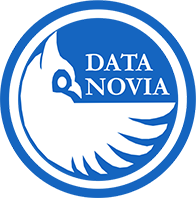Introduction
Shinylive for R enables you to run Shiny applications directly in your web browser—without the need for a traditional Shiny server. By leveraging WebAssembly (WASM) through webR, Shinylive converts your Shiny apps into static web pages that still provide full interactivity. This breakthrough allows you to deploy interactive R apps on any static hosting platform, making sharing and collaboration easier than ever.
What is Shinylive?
Shinylive is an R package that simplifies the process of converting Shiny applications for browser-based execution. Its core functionality includes:
Exporting Shiny Apps:
Converts your Shiny app (e.g., yourapp.R) into a set of static files (HTML, JavaScript, CSS, and WASM) that run entirely in the browser.Asset Management:
Automatically downloads and caches the necessary Shinylive web assets, ensuring that your app uses the appropriate versions of libraries for WASM-based execution.Serverless Interactivity:
Allows your Shiny app to run without a dedicated server by handling reactive updates and interactivity client-side.
Key Components
Shinylive consists of several interdependent parts:
Shinylive Web Assets:
A library of HTML, CSS, JavaScript, and WASM files that enable Shiny to run in the browser.The
{shinylive}R Package:
Helps you export your local Shiny application into a directory suitable for static hosting. It also manages the download and caching of web assets.Shinylive Quarto Extension:
Allows you to embed Shinylive applications directly into Quarto documents, making it simple to create interactive, serverless content.(For Python) The shinylive Python Package:
Provides similar functionality for Shiny applications written in Python.
Benefits of Using Shinylive
Serverless Deployment:
Run interactive Shiny apps without a Shiny server. This means you can host your apps on static services like GitHub Pages or Netlify.Simplified Configuration:
The{shinylive}R package automates asset management and deployment, reducing the complexity of configuring WASM environments.Enhanced Portability:
Your Shiny app becomes a collection of static files, which can be easily shared or deployed across different platforms.Immediate Interactivity:
Even though the app is served statically, interactivity remains intact, allowing for dynamic, reactive user experiences.
Use Cases
Shinylive is ideal for:
- Educational Content:
Embedding interactive Shiny apps in blog posts or e-learning modules. - Portfolio Projects:
Showcasing Shiny applications on personal websites or GitHub Pages. - Prototyping:
Quickly sharing Shiny prototypes without investing in a dedicated server.
Further Reading
For more detailed information and advanced topics related to Shinylive for R, explore these tutorials:
- Introduction to Shinylive for R
Get an overview of Shinylive, its components, and its benefits. - Installing and Setting Up Shinylive (R)
Learn how to install the {shinylive} package and configure asset management. - Creating a Basic Shinylive Application (R)
Build and export your first Shinylive app. - Embedding Shinylive Apps in Quarto Documents (R)
Learn how to integrate Shinylive apps directly into your Quarto documents.
Conclusion
Shinylive for R is a powerful tool that allows you to transform traditional Shiny apps into fully interactive, browser-based applications using WebAssembly. With its streamlined asset management and serverless deployment, Shinylive opens up new possibilities for sharing interactive R content. Explore the further reading resources to continue your journey into serverless Shiny and advanced interactive R applications.
Explore More Articles
Here are more articles from the same category to help you dive deeper into the topic.
Reuse
Citation
@online{kassambara2025,
author = {Kassambara, Alboukadel},
title = {Introduction to {Shinylive} for {R}},
date = {2025-03-17},
url = {https://www.datanovia.com/learn/interactive/r/shinylive/index.html},
langid = {en}
}
